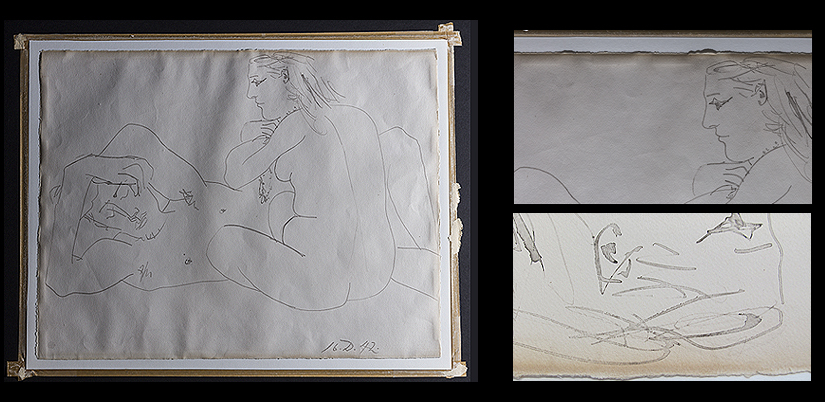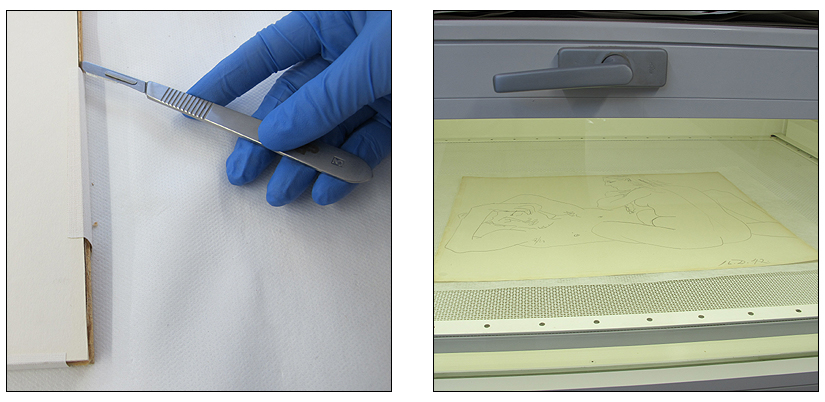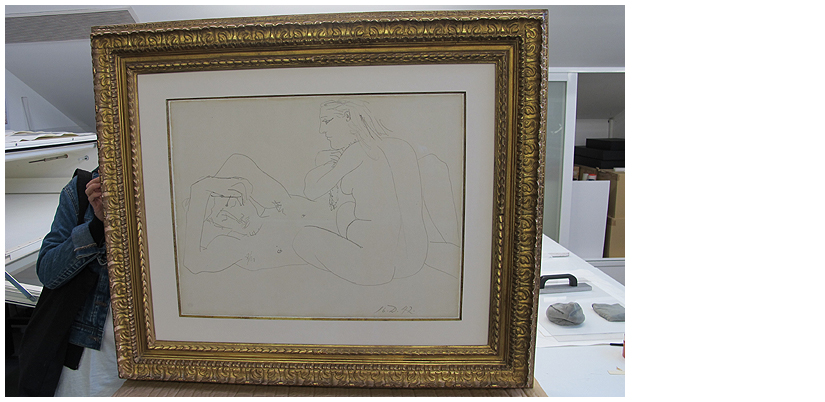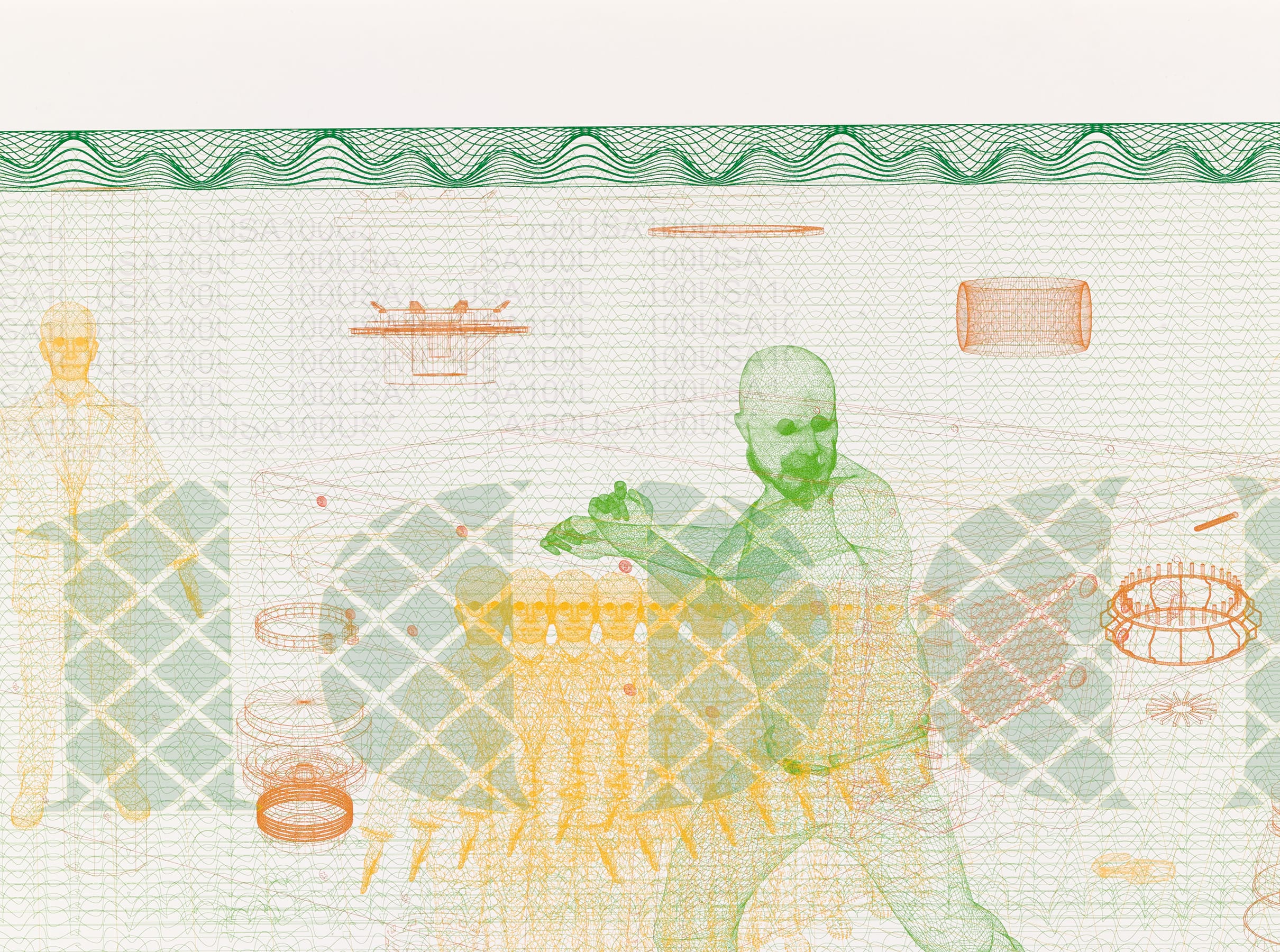
Restoration completed on Picasso's drawing Reclining Man and Seated Woman, from the collection
Some weeks ago we reported on the restoration of four important pieces from our classical collection — a small panel entitled Two Female Figures, painted around 1500, two paintings of vases dating from between 1660 and 1690, and a portrait of Charles III painted in the late eighteenth century by Valencian artist Mariano Salvador Maella. Now we are pleased to announce that we have just completed restoration on Reclining Man and Seated Woman, a drawing in Indian ink by Pablo Picasso that has been in the Banco de España's collection since 1987.

Reclining Man and Seated Woman (Pablo Picasso, 1942) before restoration
The restoration was primarily undertaken because of the poor condition of the mount, which made the drawing look dilapidated and fragile, with warping in several places, especially around the edges. The work was carried out by the Conservation and Restoration Department at the Museo Reina Sofía![]() (Reina Sofía National Art Museum),
(Reina Sofía National Art Museum),
Pilar Hernández Sanz, who was in charge of the operation, explains that thorough cleaning was required to remove surface dirt and oxidation from the mount. A humidification chamber was used to repair the warping and ensure dimensional stability. The piece has now been put back in its original frame, although the mount has been entirely changed and the window replaced to ensure that the gilt edge no longer protrudes over the edges of the drawing, possibly leading to further oxidation. The ink, on the other hand was in good condition, with only slight fading, and required almost no intervention.
 Two moments in the process of restoring Reclining Man and Seated Woman (Pablo Picasso, 1942)
Two moments in the process of restoring Reclining Man and Seated Woman (Pablo Picasso, 1942)
Reclining Man and Seated Woman is one of a series of drawings Picasso made in Paris in December 1942, a period when he was strongly influenced by the expressionist movement. Julián Gállego and María José Alonso consider this to be perhaps one of the most successful drawings in the series, in which the artist repeats the same motif, with only the position and posture of the two figures varying. With just a few pen strokes, Picasso manages to endow them with a tremendous sense of monumentality and classical bearing, giving the drawing great expressive strength.

Reclining Man and Seated Woman (Pablo Picasso, 1942) after restoration
The theme of intimacy is a constant in Picasso's oeuvre, with examples in a range of formats —drawings, lithographs, oil paintings, photographic images, etc., some erotic and some depicting scenes of great tenderness. Gállego and Alonso associate this duality with the principle which —according to Paul Éluard— runs through and inspires much of Picasso's work. As the French poet puts it, Picasso sought to "overcome all gentleness with violence and all violence with gentleness".
